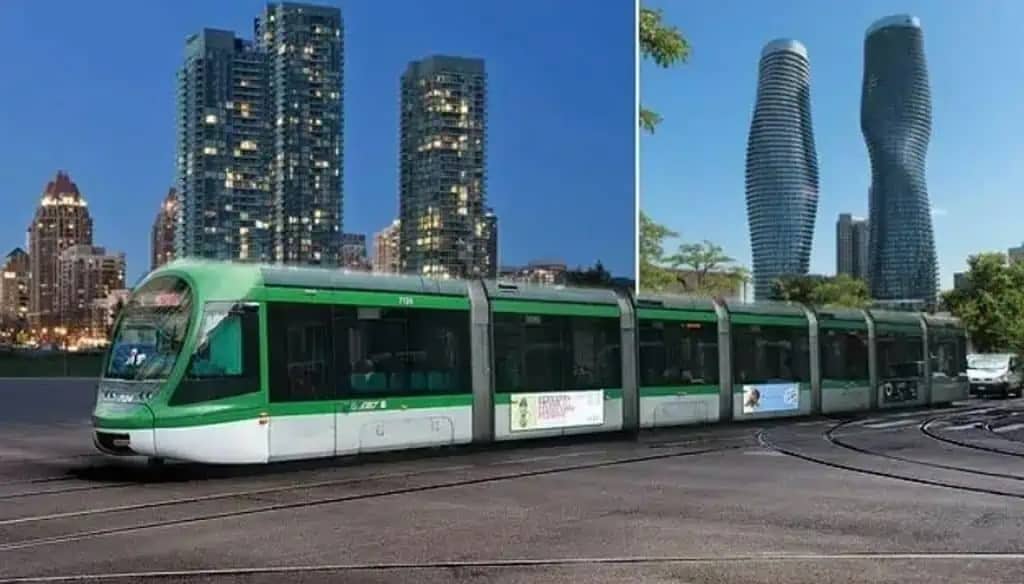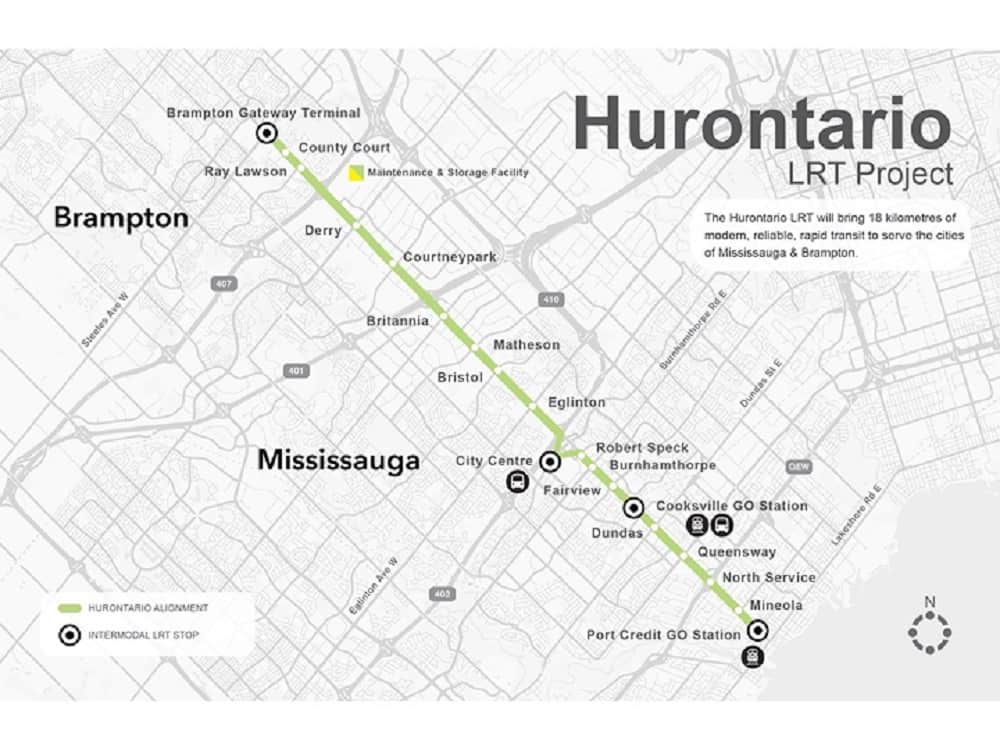City Centre transit loop ‘crucial’ to future of Mississauga
Published January 19, 2024 at 2:30 pm

Building a light-rail transit loop in Mississauga’s downtown core is vitally important to the city’s future, say Mississauga officials who’ve been pressing the Ontario government for four years to reintroduce that component to the much larger Hurontario LRT project.
Word came earlier this week that the province wants to once again include the “downtown loop” as part of the largest transit project in Mississauga’s history after having dropped it from the plans in a cost-cutting move in 2019.
Ontario’s transportation minister has directed Metrolinx, the provincial agency overseeing the $4.6 billion transit initiative, to quickly prepare a business case to both reinstate the “downtown loop” and extend the Hazel McCallion Line (so named two years ago) by three kilometres into downtown Brampton.
A Metrolinx spokesperson told insauga.com that “we are in receipt of the Minister’s letter and look forward to responding to the Minister by Feb. 5 (as directed).”
Mississauga acting mayor John Kovac, also councillor for the city’s downtown area (Ward 4), told insauga.com in an interview the loop’s reinstatement is “something to get excited about.”
He added in a follow-up email that the Hazel McCallion Line is the largest transit project in Mississauga’s history and that the “downtown loop” is a critical part of it.
“With our downtown population set to double in the next decade, the decision to build the loop is the right move as we strive to meet housing targets and alleviate congestion,” Kovac said. “The loop will play a crucial role in ensuring the efficient movement of people and it aligns with the needs of the fastest-growing area of our city, our downtown core, while better connecting all of Mississauga.”
Loop will be an “incredible addition”
He added that “while this news (of the loop’s reinstatement) has not been directly communicated to the City of Mississauga (by the province), I welcome the Ontario government’s direction to Metrolinx to expand the LRT into downtown Mississauga and look forward to engagement with Metrolinx and the Ministry of Transportation on the rollout of the loop.”
Mississauga Ward 5 Coun. Carolyn Parrish told insauga.com that the loop “will be an incredible addition to the city’s transportation network. There are thousands of units in the city core. Now we need solid east-west connectors (in Mississauga) and we can reduce dependence on cars a little more.”
Geoff Wright, Mississauga’s transportation and works commissioner, said the “downtown loop” has been one of the city’s top transit and city-building priorities for many years.
“This critical piece of infrastructure supports our housing targets as the downtown is expected to more than double in population in the next 30 years as towers continue to rise,” he said in an email to insauga.com. ” The Downtown Loop also supports our climate change and transportation goals to move more people on public transit. The business case for the Downtown Loop is very strong. With the construction of the Hazel McCallion Line and now the Loop, residents in Mississauga and across the GTA will have more transit options available to them, and these projects will help to ease congestion and gridlock in our city.”
Metrolinx also acknowledged the importance of the Hazel McCallion Line, which will extend to become a 21-kilometre LRT route that whisks passengers from south Mississauga north into downtown Brampton, via Mississauga’s downtown core.
75,000 people expected to live in downtown core
“The Hazel McCallion LRT will be a transformative project for the region and both the loop and Brampton Extension have always been viewed as strong and viable next phases of this project,” the provincial agency said in an email to insauga.com.
Some 75,000 people expected to be living in highrises around Square One in Mississauga in the coming decades will now have additional public transit right at their doorstep via the “downtown loop.”
That’s in addition to the thousands more people working at businesses in Mississauga’s downtown.
The Hazel McCallion Line, which will now see several more downtown Mississauga stops added to its current 19-stop layout, is expected to open later this year at the earliest, and more likely in early 2025.
The “downtown loop” will, essentially, shoot off from the main line on Hurontario Street and circle through the many highrise condos and businesses in Mississauga’s downtown core.

Map shows route the Hazel McCallion Line will follow when it opens to passengers. The reinstated transit loop in downtown Mississauga will be added to an updated map.
Former Mississauga mayor Bonnie Crombie said last week in her final address as mayor that she hoped the Ontario government would reconsider the “downtown loop.”
In arguing last June for its reinstatement, Crombie spoke confidently about Mississauga’s chances to get the loop restored.
She pointed to some pretty big numbers that characterize the city’s downtown core. In an interview with insauga.com at the time, she presented her case.
“With the exponential, explosive growth of our downtown since we have unlimited heights and densities, and we’re expecting 116 new towers in the next 20 years, we’ve decided that loop should probably be located closer to Confederation Pkwy., a little further west,” Crombie said of city plans to tweak its vision for the “downtown loop.”
“The numbers with the exponential growth speak to the need to build that downtown loop,” she continued, noting that some 75,000 people anticipated to be living in the downtown core, many in “mega-towers,” will “certainly need public transit at their doorstep.”
Premier Doug Ford on several occasions in the last two or so years had urged Mississauga to hit up the development community for money to pay for the loop.
Some estimates indicate it will cost up to $400 million to add the loop to the LRT project and that was before plans to make it larger. That amount is expected to rise significantly as time goes by and construction costs rise.
INsauga's Editorial Standards and Policies








